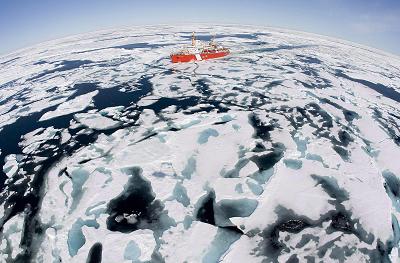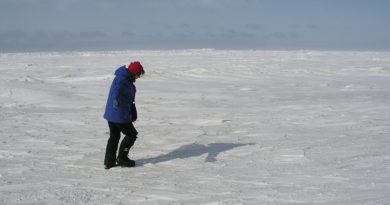Canada’s Arctic/offshore patrol ships delayed three more years
 The Royal Canadian Navy’s plans to acquire six to eight ice-capable Arctic/Offshore Patrol Ships (AOPS) are facing yet another obstacle. On Tuesday in the Canadian House of Commons, the 2012-13 Reports on Plans and Priorities were tabled.
The Royal Canadian Navy’s plans to acquire six to eight ice-capable Arctic/Offshore Patrol Ships (AOPS) are facing yet another obstacle. On Tuesday in the Canadian House of Commons, the 2012-13 Reports on Plans and Priorities were tabled.
The reports sum up the expected revenue, expenditures, and projects of each government agency and department in Canada. National Defence’s plans and priorities show that the AOPS will be delayed another three years, with delivery now scheduled for 2018.
The first ship will not be operational until 2019, and that full operational capability of all of the ships will not be reached until 2023. The Treasury Board gave preliminary approval to the project in May 2007, so by the time the project is finally completed, over fifteen years will have elapsed.
This is a very lengthy timeframe and reveals the difficulty that Canada (like most Arctic countries) is having in quickly adapting to the Arctic, where both the operating environment and military needs are changing.
During the 2006 election, Prime Minister Stephen Harper vowed to purchase three armed icebreakers. Those plans were shunted aside in 2008 in favor of the cheaper AOPS, which will cost CAN $3.1 billion to acquire.
Another CAN $4.3 billion is budgeted for the ships’ maintenance and operation. In addition to the ships, jetty infrastructures are slated to be constructed in Esquimalt, British Columbia and Halifax, Nova Scotia. The naval refueling station in Nanisivik, Nunavut, which has already been scaled back considerably as I discussed here, will also support the AOPS.
‘A dumb idea’
Liberal Senator Colin Kenny, former chair of the senate defence and security committee, spoke out against the AOPS, saying, “They’re just a dumb idea.” He believes that the AOPS project is one of the first places the government should look to make cuts to the defense budget. Kenny continued, “They don’t break ice and they go 16 knots and that’s slower than a fishing boat.”
The ships will be able to break through medium, first-year ice, and will not be nearly as powerful as a heavy icebreaker. However, one icebreaker is still in the works for Canada, the CCGS John G. Diefenbaker, which is scheduled for delivery in 2017. All of these ships, and more, are part of Canada’s National Shipbuilding Procurement Strategy, in which the country will significantly rebuild its navy and coast guard fleets.
Commander of the Royal Canadian Navy, Vice-Admiral Paul Maddison, wrote in an editorial in Vanguard, “AOPS will not be a complex combatant. It will be armed and equipped for a constabulary role in support of other government departments – a role, however, that will require it to operate effectively, safely and reliably within the Arctic Archipelago during the navigable season, and not merely in the low Arctic, as well as in Canada’s other two oceans at other times of the year.”
Thus, AOPS will mostly be responsible for surveillance in Canada’s three oceans, providing situational awareness, and cooperating with other agencies to enforce Canadian sovereignty. In terms of their offensive and ice capabilities, they are a far cry from an armed heavy icebreaker, but will at the same time have more maneuverability and flexibility.
Whether this is what the Conservatives really want in the Arctic is doubtful: were the economy better, they likely would have tried to stick with the original plan for three icebreakers to better project Canadian sovereignty in the Arctic. AOPS, however, is probably more practical for the time being, especially given the non-combative nature of the Arctic and general spirit of military cooperation.
News Links
[1] “Preparing for a unique maritime theatre,” Vanguard [2] “Armed Arctic vessels face delay in latest procurement setback,” Calgary Herald



